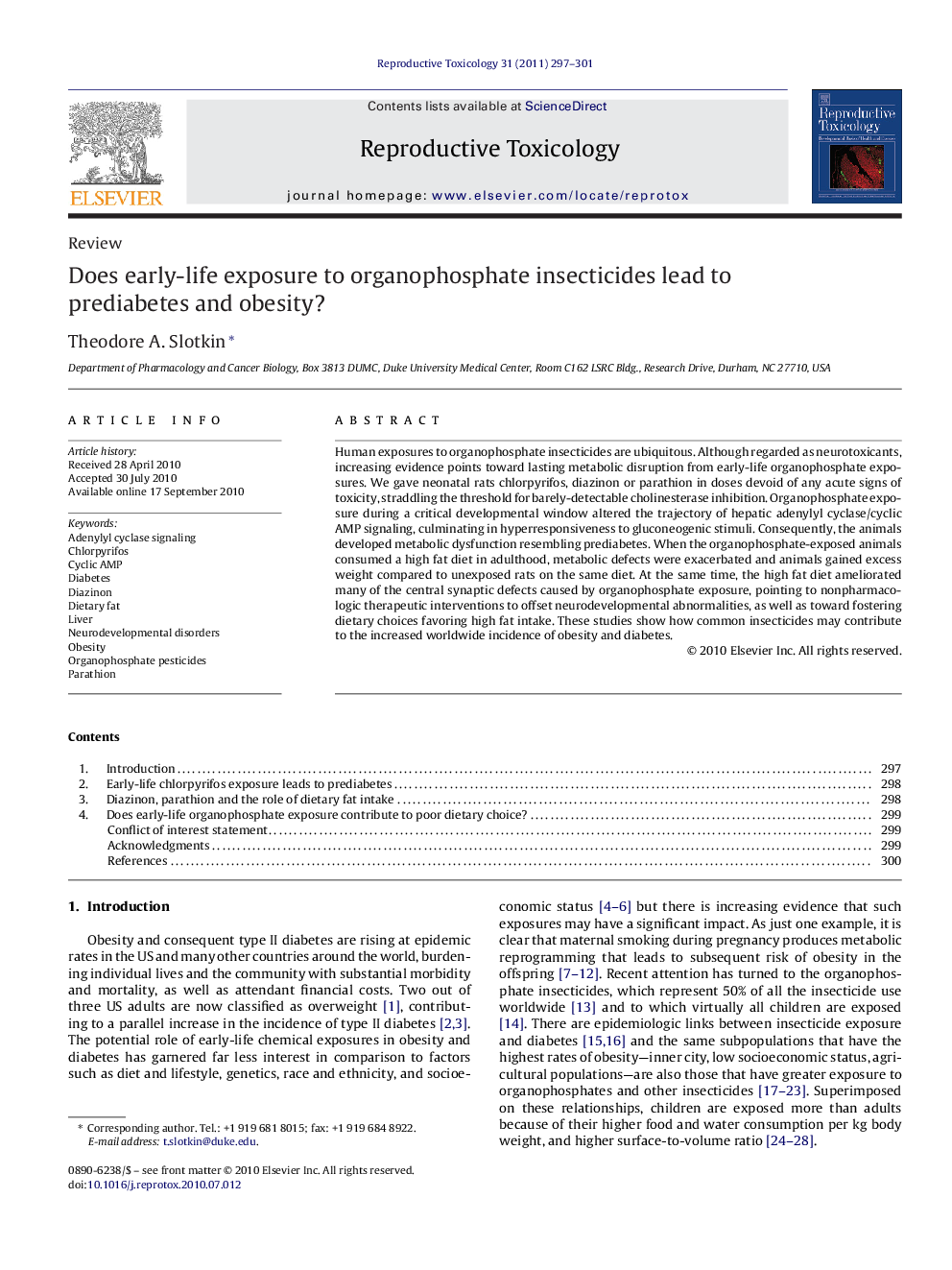| کد مقاله | کد نشریه | سال انتشار | مقاله انگلیسی | نسخه تمام متن |
|---|---|---|---|---|
| 2594731 | 1132277 | 2011 | 5 صفحه PDF | دانلود رایگان |

Human exposures to organophosphate insecticides are ubiquitous. Although regarded as neurotoxicants, increasing evidence points toward lasting metabolic disruption from early-life organophosphate exposures. We gave neonatal rats chlorpyrifos, diazinon or parathion in doses devoid of any acute signs of toxicity, straddling the threshold for barely-detectable cholinesterase inhibition. Organophosphate exposure during a critical developmental window altered the trajectory of hepatic adenylyl cyclase/cyclic AMP signaling, culminating in hyperresponsiveness to gluconeogenic stimuli. Consequently, the animals developed metabolic dysfunction resembling prediabetes. When the organophosphate-exposed animals consumed a high fat diet in adulthood, metabolic defects were exacerbated and animals gained excess weight compared to unexposed rats on the same diet. At the same time, the high fat diet ameliorated many of the central synaptic defects caused by organophosphate exposure, pointing to nonpharmacologic therapeutic interventions to offset neurodevelopmental abnormalities, as well as toward fostering dietary choices favoring high fat intake. These studies show how common insecticides may contribute to the increased worldwide incidence of obesity and diabetes.
Research highlights▶ Exposure to organophosphate insecticides is virtually ubiquitous. ▶ Nontoxic exposures of neonatal rats to organophosphates reprograms metabolism. ▶ This leads to excess weight gain and prediabetes, exacerbated by a high fat diet. ▶ Pesticide exposures may contribute to worldwide increases in obesity and diabetes.
Journal: Reproductive Toxicology - Volume 31, Issue 3, April 2011, Pages 297–301